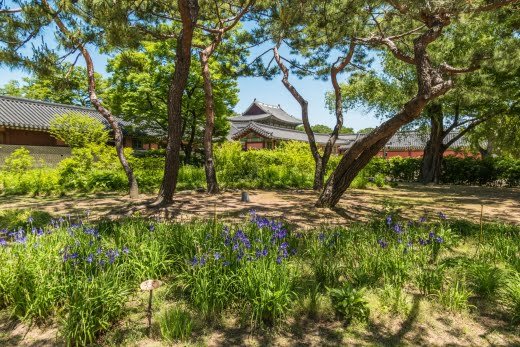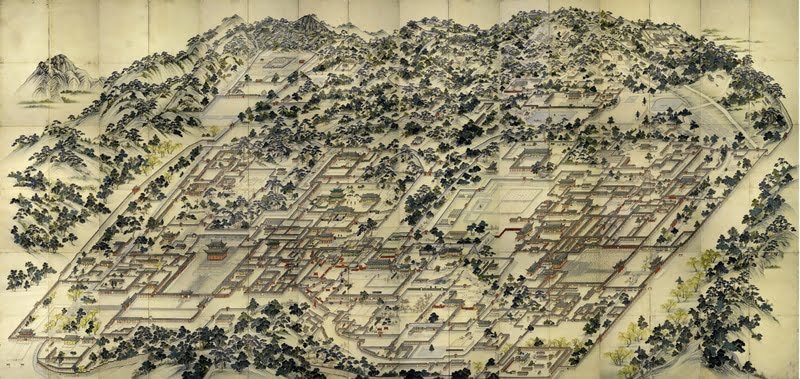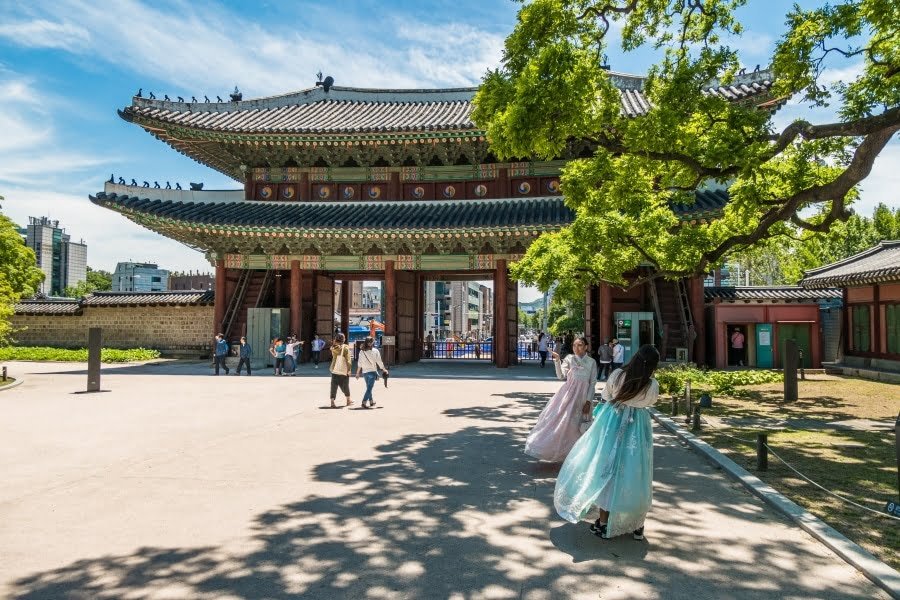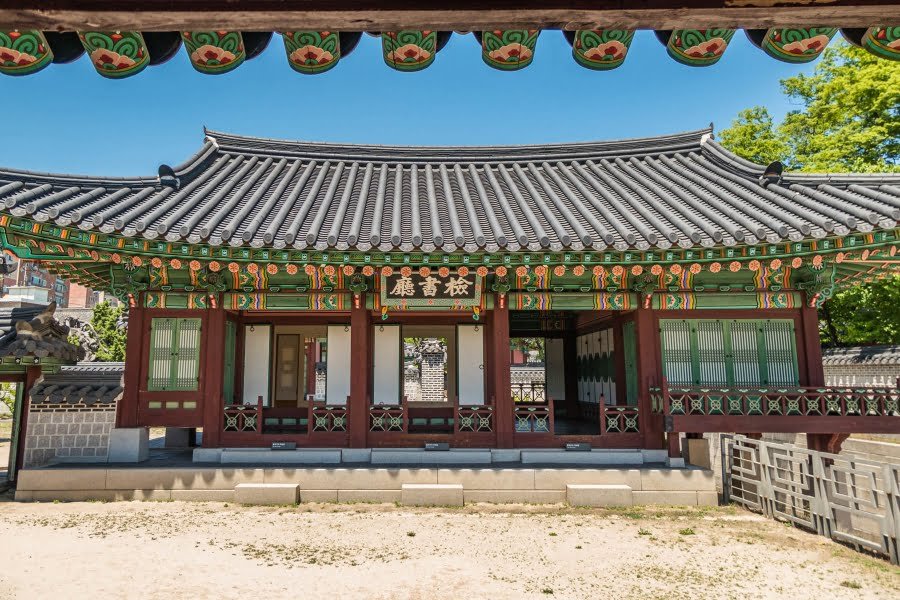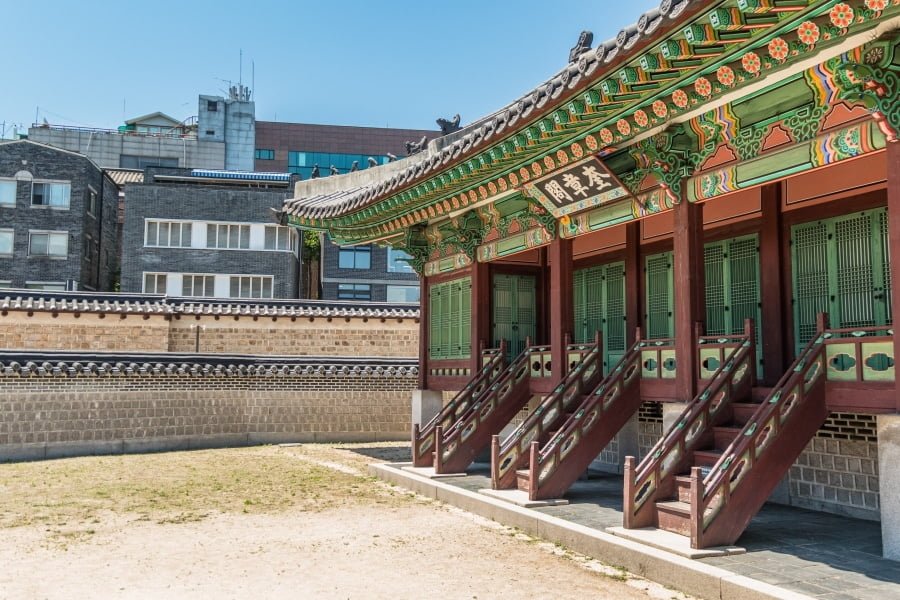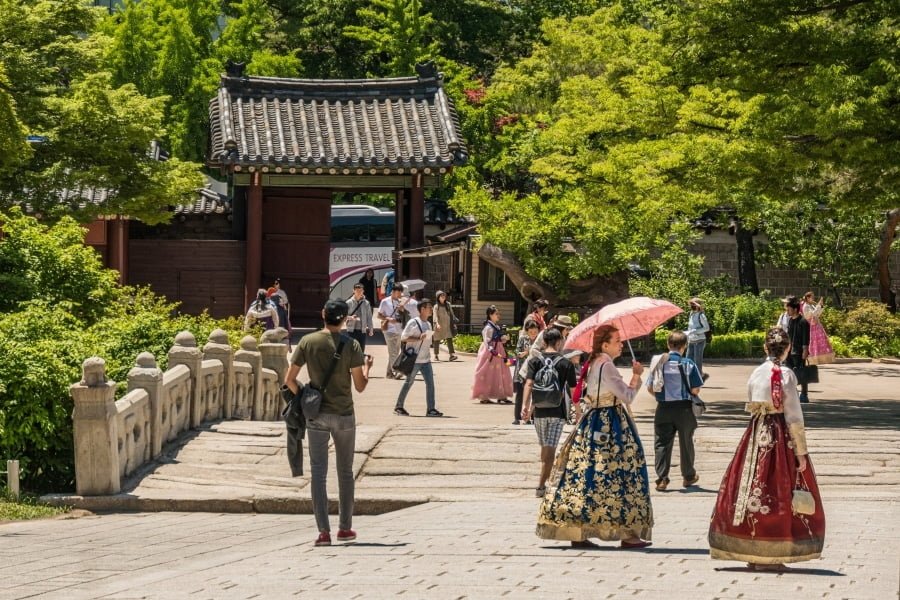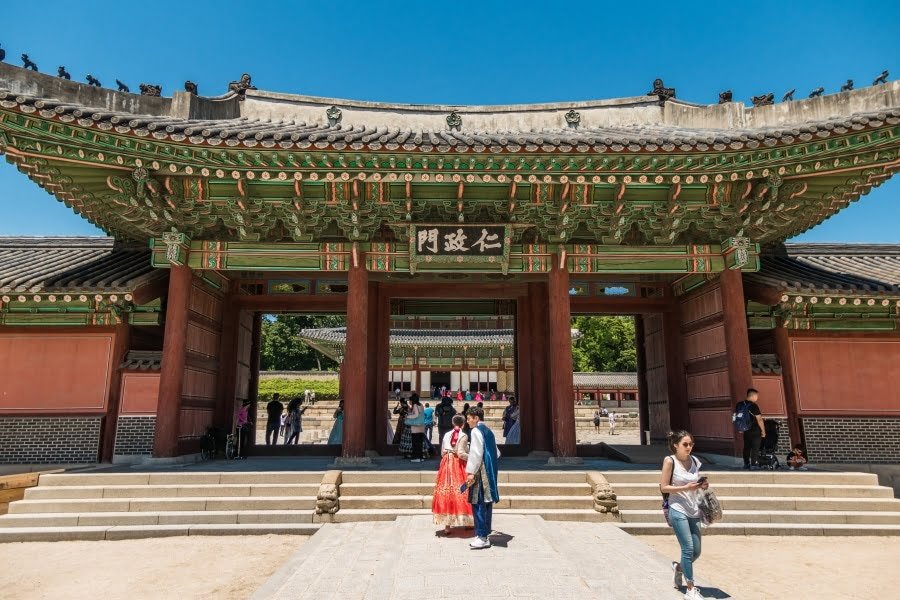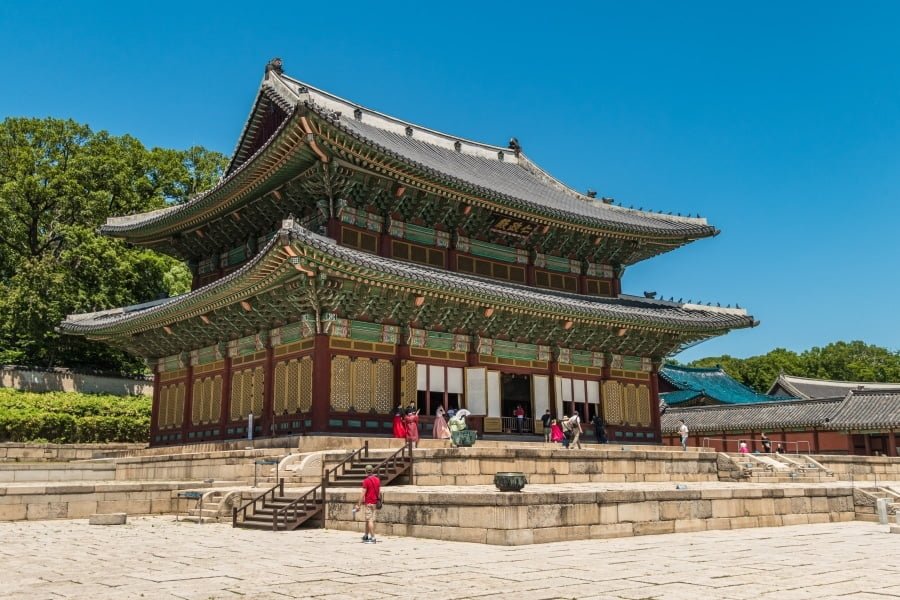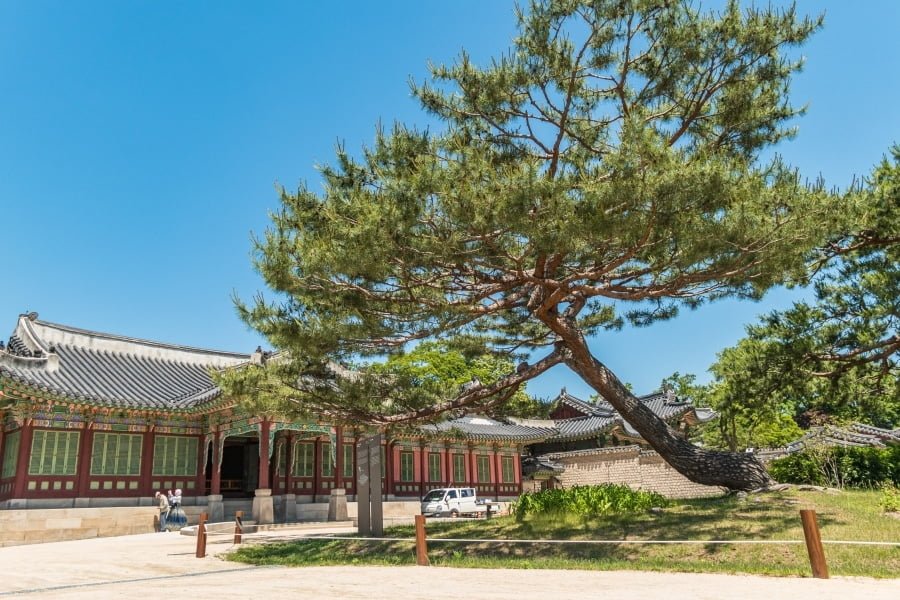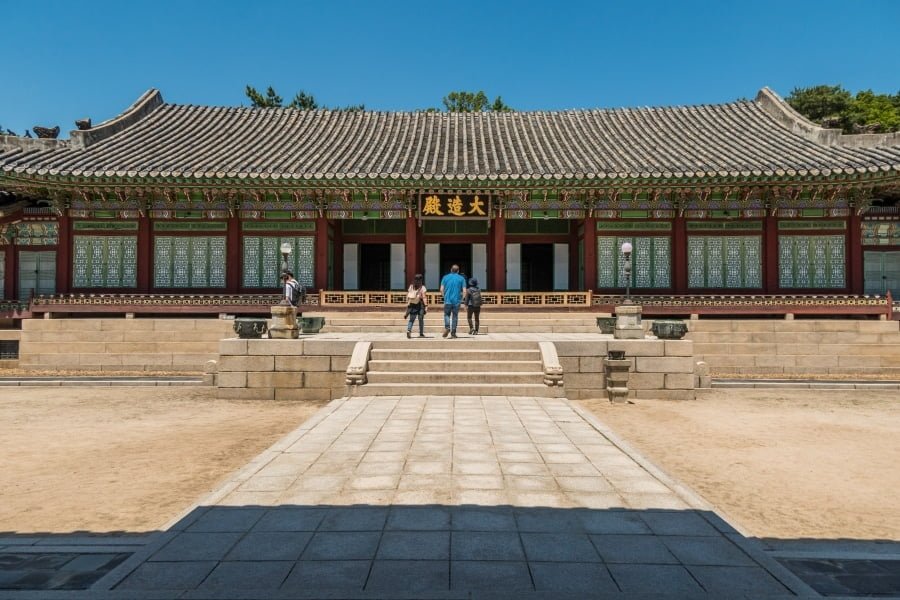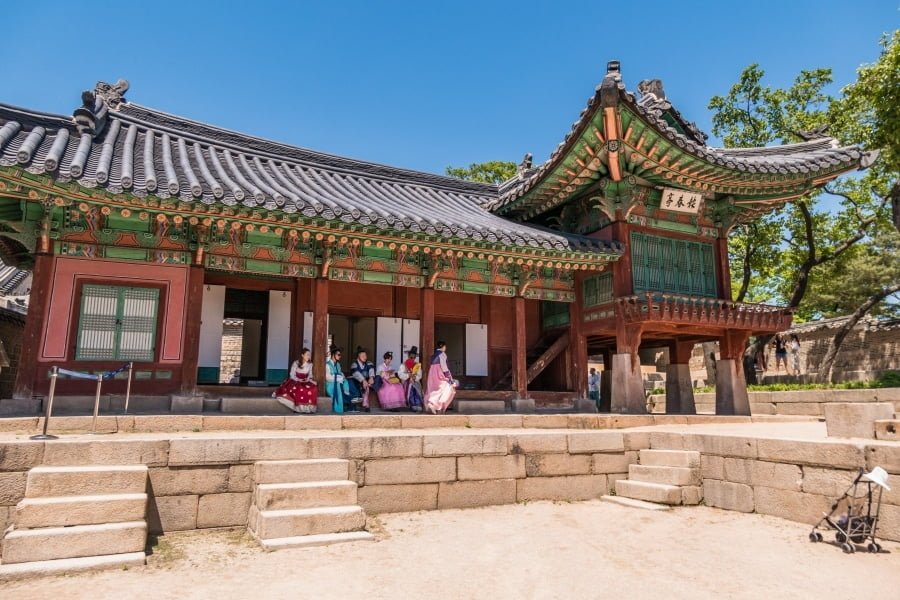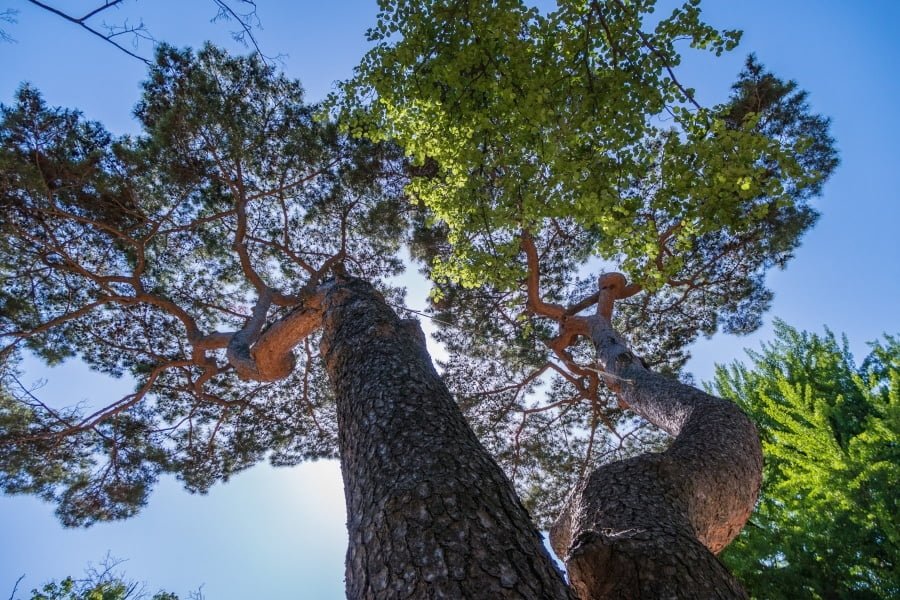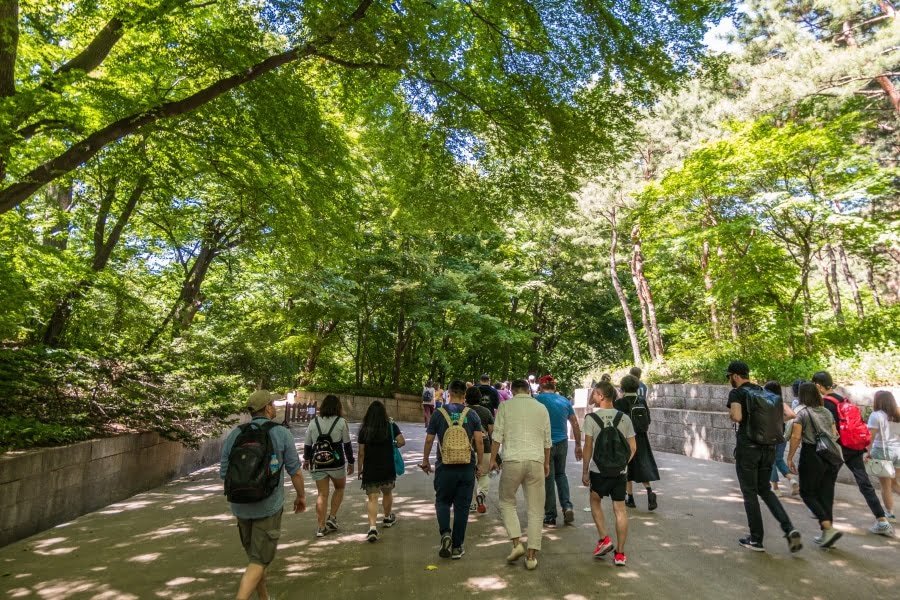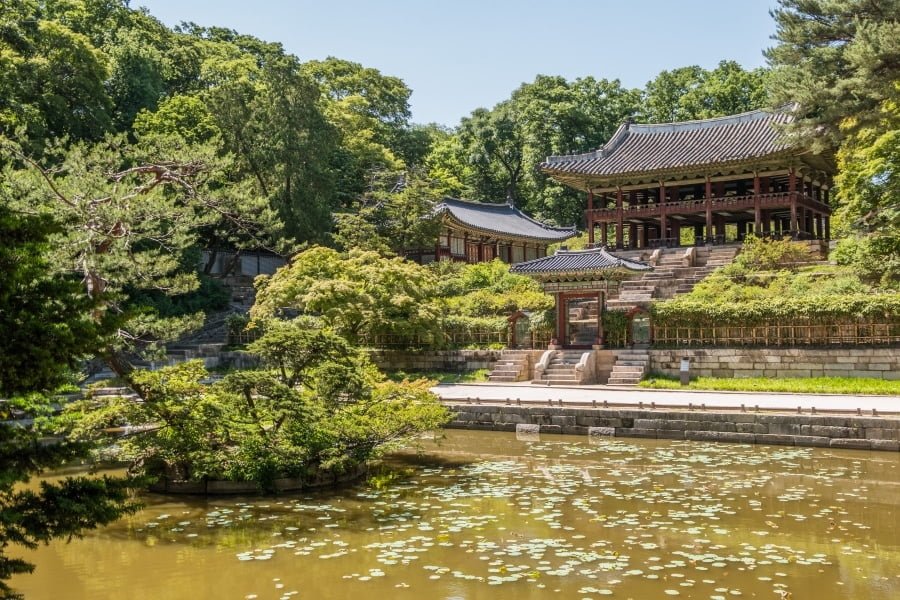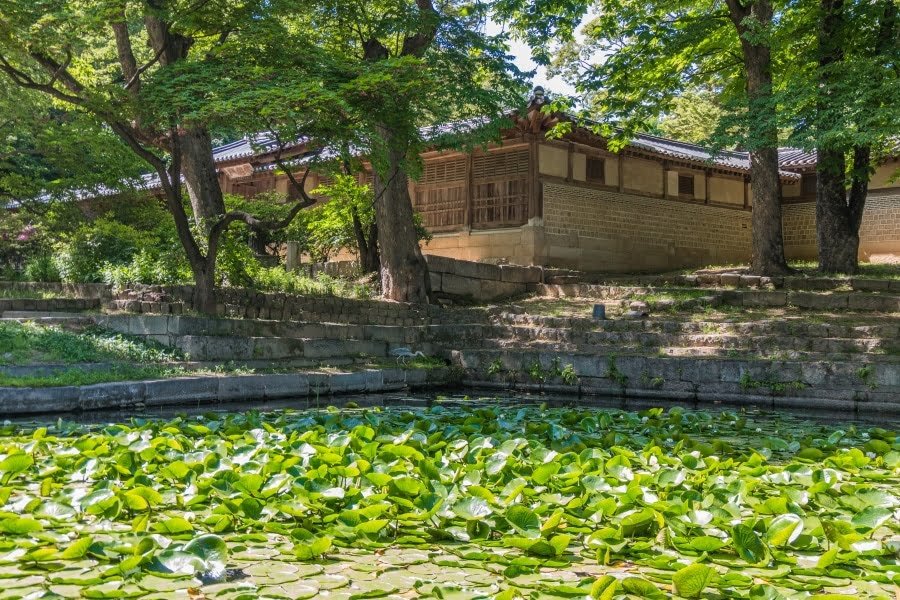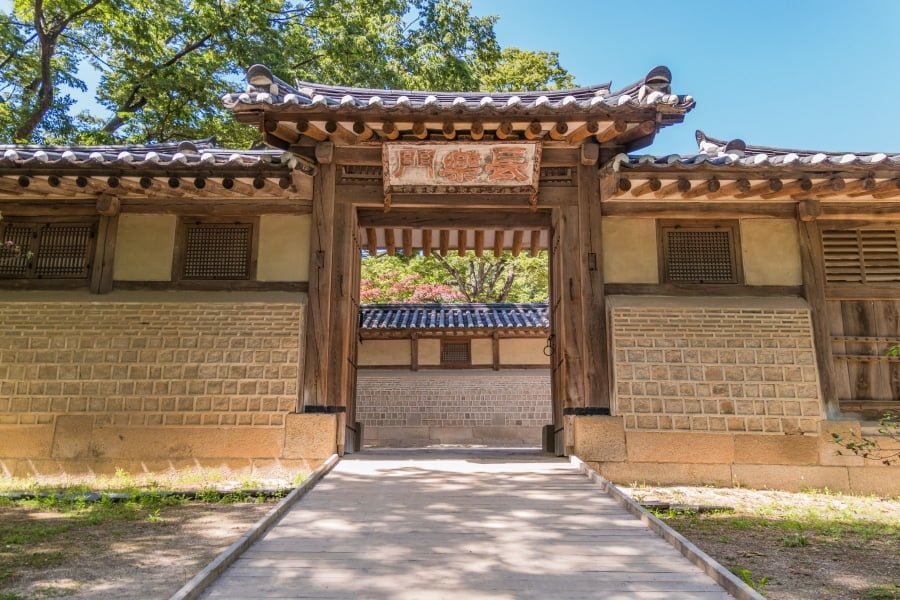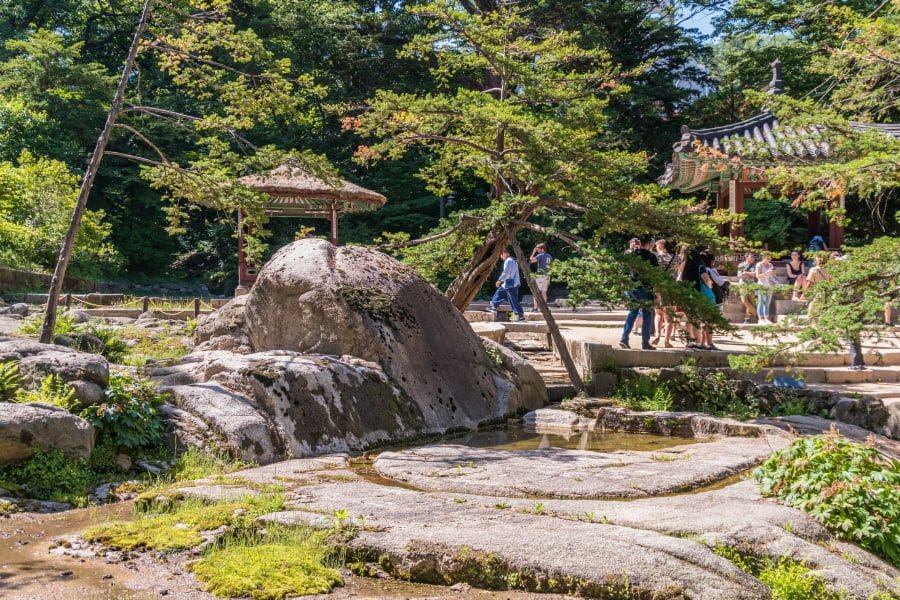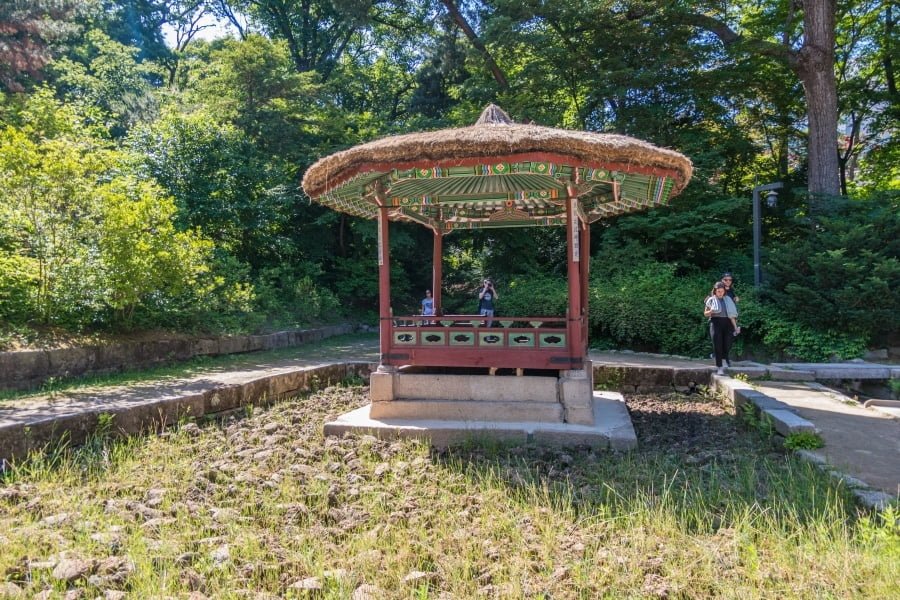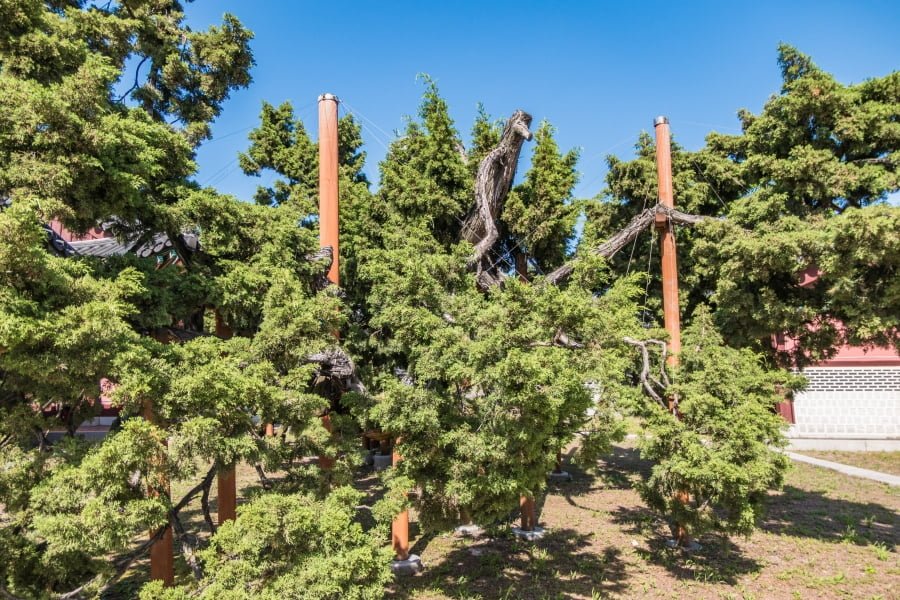
Changdeokgung: a palace and its secret garden in the heart of Seoul
Changdeokgung, or Changdeok Palace, is another must-see site during a visit to Seoul, listed as a UNESCO World Heritage Site since 1997.
Changdeokgung Palace was built starting in 1405, during the reign of the third king of the Joseon Dynasty. Much like Gyeongbokgung Palace, it has a troubled history, with several structures in Changdeokgung having burned down several times.
As it is a palace located east of Gyeongbokgung, Changdeokgung was simply called "East Palace" (Donggwol), today forming a complex with another palace included in the same space, called Changgyeonggung Palace. Changdeokgung was built in harmony with the topography of the area, integrating with the natural environment – building it closer to the mountain.
This article is part of my series on Seoul. If you're planning a comprehensive itinerary, find the detailed itinerary here. 4 days in Seoul.
Practical information
Getting to Changdeokgung Palace
Much like Gyeongbokgung Palace to the west, this palace is easily accessible via public transportation. The visit is ideal to combine with the neighboring Jongmyo Shrine.
Address: 99 Yulgok-ro, Waryong-dong, Jongno-gu, Seoul
You have the above location on Google Maps but if you plan to use the local navigation app Naver Map, it's here (it's in Korean by default...):
As already said, it's the fastest and most efficient way to get around Seoul. And you will obviously find a station nearby, even if you have to walk a bit (well, it's not even 400 m, that's fine).
- Line 3, Anguk station, exit 3
Since it is in the city center, there is a wide choice of bus numbers passing in front of the palace. Depending on your departure location, you can take the following buses: 109, 151, 162, 171, 172, 272 or 710.
You have to stop at the bus stop 창덕궁.서울돈화문국악당 (but I guess it's also indicated in English, so stop Changdeokgung).
Changdeokgung Palace Hours and Fees
Changdeok Palace Map
To help you find your way around the information I will provide below, here is a Changdeok Palace map. I indicate the numbers corresponding to the photos and associated explanations, so that if you do not take a guided tour, you will normally understand what the structures are around you.
The map below is my own, so I have respected the chronological order of our visit.
1. Donhwamun Gate
2. Gwolnaegaksa
3. Seonwonjeon Hall
4. Geumcheongyo Bridge
5. Injeongmun Gate
6. Injeongjeon Hall
7. Seonjeongjeon Hall
8. Huijeongdang Hall
9. Daejojeon Hall
10. Seongjeonggak Hall
11. Nakseonjae Hall
12. Buyongji Pond and Juhamnu Pavilion
13. Aeryeonji Pond
14. Yeongyeongdang Hall
15. Gwallamjeong Pavilion
16. Ongnyucheon Stream
17. New Seonwonjeon (shrine)
18. Changdeokgung Chinese Juniper

Brief history of the palace Changdeokgung
Le Changdeok Palace was built from 1405, just a few years after the completion of the then main palace, Gyeongbokgung, and under the leadership of the same king, Taejong. It was then a secondary palace, just 1 km east of Gyeongbokgung.
It also had a tumultuous history, especially in the 17th century, before finally obtaining "consecration" by being designated " World Heritage of Humanity » by theUNESCO in 1997.
In summary, here are the key dates to remember:
1405-1412 : construction work on the new palace.
1406 : added the “ Secret garden", called Huwon (후원)
1592 : it's the period of Japanese invasions (Imjin War). The palace is destroyed by fire.
1610 : Changdeokgung is rebuilt and becomes the main palace in place of the Gyeongbokgung Palace (also burned down but which remained abandoned for two centuries).
1623 : another fire the palace was taken over by King Injo following his coup.
1647 : after 25 years, the palace is finally reconstructed. Most of the structures then remain faithful to the original model.
1907 : after 260 years without major incident, a major fire breaks out in the heart of the palace.
1990-1999 : Restoration work is being carried out at Changdeokgung Palace.
Despite the ravages of time, Changdeok Royal Palace is one of the best preserved palaces in Korea. That is why UNESCO listed Changdeokgung Palace in 1997, together with Huwon Garden, covering an area of 58 hectares. It is praised for its exceptional architecture and its design in harmony with the natural landscape of the area (see description on UNESCO official website).
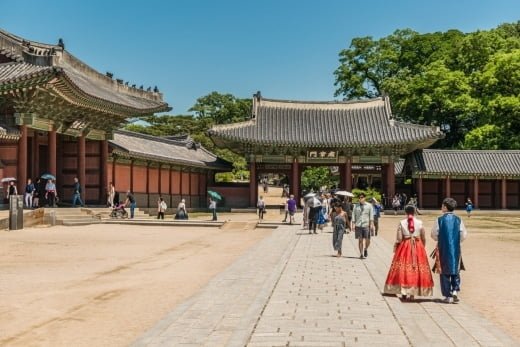

It is worth noting for clarification that when they were rebuilding the nearby Gyeongbokgung Palace, Changdeokgung Palace was the site of the royal court and seat of government until 1868. Emperor Sunjong, the last emperor of Korea, lived there until his death in 1926.
Furthermore, Changdeokgung Palace is known to be the final resting place of the descendants of the royal family, some of whom lived there until 1989.
Visit the different structures of the palace
As it is a fairly large palace, without even counting the secret garden part, it is not always easy to know where to look and go to properly tour the site. There are many halls and to help you find your way around, I will present here some buildings that you can discover during a visit to Changdeokgung Palace.
1. Donhwamun Gate
Let's start at the beginning, and upon arriving at Changdeokgung Palace, it was quite naturally in front of its main gate, Donhwamun, that we presented ourselves to pay our tickets and access the interior. The original version had been built in 1412, but it was destroyed following the Japanese invasions from 1592. It was rebuilt at the same time as most of the palace from 1607. A process that would take two years, the gate as it is today therefore dates from 1609. As in the process, Changdeok Palace became the main palace, the gate was widened and is today the most imposing of all the main gates of the royal palaces.
The gate follows the codes of Korean architecture, using a two-story roof. According to data, in 2, there was a 1413-ton bronze bell hanging here, but it was later removed. The cobblestones that are walked under the gate, on the other hand, were added during the renovation of the palace in the late 7,5th century.
Donhwamun Gate, seen from inside the palace. Once in the courtyard behind the gate, what I notice right away are the large trees lined up on the left, which I imagine are splendid in spring. As that day, there was a beautiful blue sky, there was a nice contrast of colors with their very green leaves. The small flowerbed and its small purple flowers completed this pretty entrance picture.
What you can also quickly notice, as with other palaces, is that you come across a lot of people with hanboks (traditional outfits). A fashion already encountered in Japan, but also noted in Thailand. Well, knowing that it offers a free entry fee, plus very instagrammable souvenir photos, it's sure that it helps.
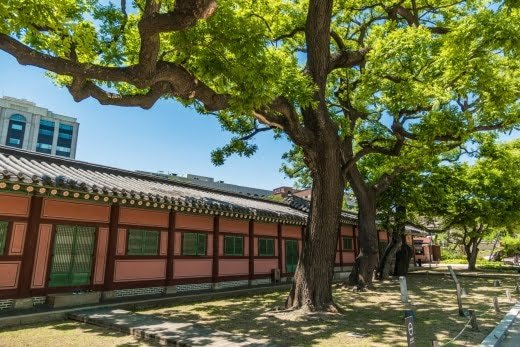
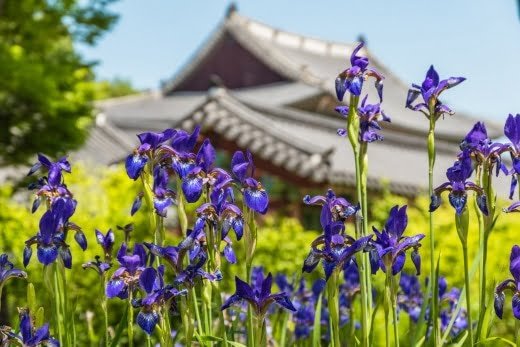
2. The complex of Gwolnaegaksa
Knowing that if the map I provide you above is my own, it is because I could not find a version large enough and above all, sufficiently satisfactory in terms of indications. On the English map of the official website dedicated to Korean cultural heritage, for example, there is no mention of this part of the palace.
And while the place seems quite cramped and therefore of lesser importance, it was nevertheless government offices, built on the grounds of the palace in the late 19th century. They were then known as Gwolnaegaksa complex, the rest of the government offices having been built outside the palace. Yet it was in these offices that the Emperor chose to manage political and royal family affairs.
In this somewhat labyrinthine complex there is a royal infirmary (Naeuiwon), an office of special advisers (Hongmungwan), a publications office (Geomseocheong), a royal library (Gyujanggak) and a room called "maintaining the policies of the ancient kings" (Bongmodang).
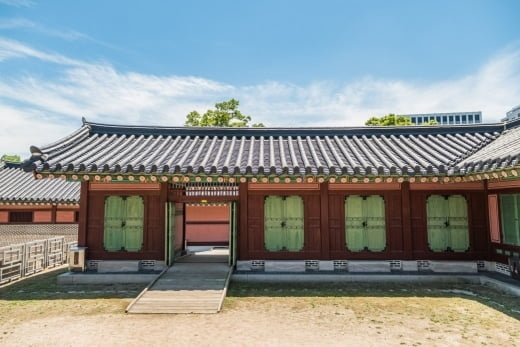
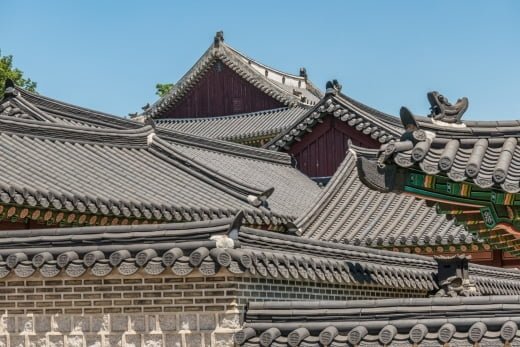
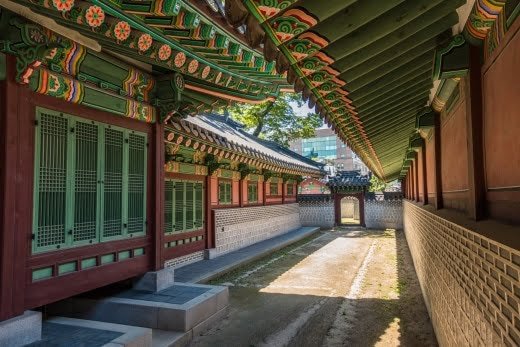
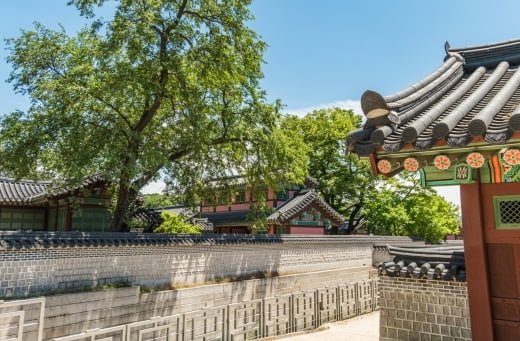
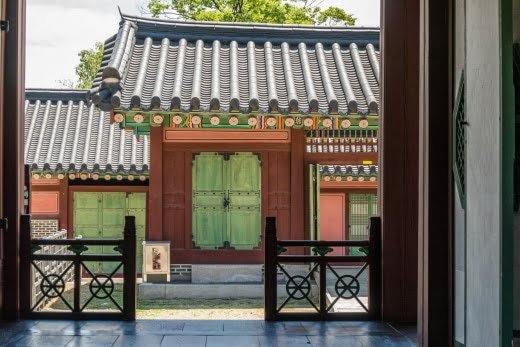
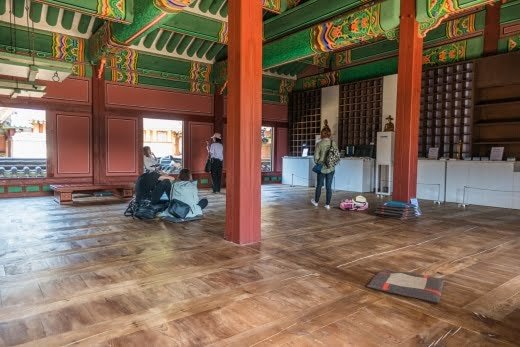
During the Japanese occupation of Korea in the early 20th century, the Japanese wanted to make room for a road to be widened. They moved the collection of books in the Royal Library (Gyujanggak) to the library of Seoul National University (where they still are) and destroyed the building.
The current version therefore dates from 2005, when the process of Restoration of the Gwolnaegaksa complex began. The complex is completed in its original design, separated from the palace complex by a canal used to carry water from the Ongnyucheon area spring (called the Jade Stream), located in the secret garden.
The reason for this canal being, among other things, due to the belief that entering the palace through flowing water was a good omen and would prevent any harm.
3. SeonwonJeon Hall
La Seonwonjeon Hall was used to store portraits of ancient kings and where ancestral rites were performed. These portraits were unfortunately destroyed during the Korean War (1950-1953).
However, the building that you see is old. It was moved to this site in 1656 from the nearby Gyeongbokgung Palace. At that time, and until 1695, the building was known as Chunhuijeon. In 1921, during the Japanese occupation, a new hall was built inside the Huwon Garden (marked #17 on my map), bearing the same name. It is in this new room that ancestral rites are performed.
In 2005, the auxiliary buildings, Jinseolcheong and Naechaldang, located to the left and right of Seonwonjeon Hall, were restored.
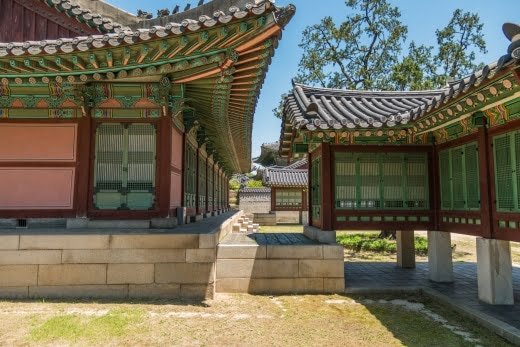
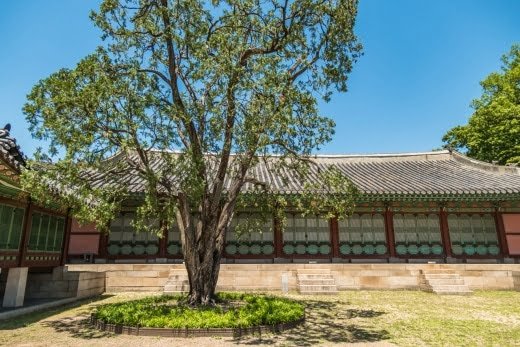
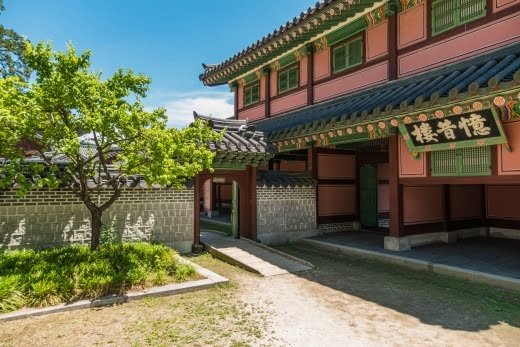

4. Geumcheongyo Stone Bridge
Returning to the main entrance through the maze of buildings we have been through so far, we pass by a small stone bridge. I struggled to find a photo of the said bridge, because at the time, I had not particularly calculated it… However, it is aligned with the alley crossing in front of the Injeongmun gate (which provides access to the throne room of the Changdeokgung palace).
Ce stone bridgenamed Geumcheongyo dates back to 1411. It's about oldest stone bridge in the capital, because yes, this small building has been spared from all the damage suffered by the palace over time.
Injeongmun Gate and Throne Hall
Passing through Jinseonmun Gate, which faces the stone bridge, one arrives at a courtyard with a stone-paved path. In front is Sukjangmun Gate, which leads to the rest of the palace. To the side, in the middle is the Injeongmun Gate, main entrance to the courtyard surrounding the throne room of Changdeokgung Palace.
5. Injeongmun Gate
Serving as the main gate of the Injeongjeon Throne Hall, Injeongmun Gate was built in 1418, during the reign of King Taejon (3rd king of the Joseon Dynasty as a reminder). Later, the gate suffered the ravages of the Imjin War (Japanese invasion of Korea in 1592). Having been rebuilt, it was again destroyed by fire in 1744, then rebuilt the following year. The gate is therefore presumably from this period, even if it has features that are more often seen in the late XNUMXth century (this can be explained by the renovations that took place at this time).
Injeongmun Gate served as the venue for several coronation ceremonies of kings, succession of the prince's throne, and many other national affairs celebrated by royal members who gathered and lined up around this gate.
6. Injeongmun Throne Hall
La Injeongjeon Hall is the main hall of Changdeokgung Palace, thus serving as the throne room. It was used by the king and officials for conferences but also to receive visitors, ambassadors and other foreign envoys when they arrived at the palace. It was also where the ceremony took place which saw the officials gather to greet the sovereign on New Year's Day.
Originally built in 1405, the building was destroyed twice by fire, once in 1592 (I'm going to rewrite the context each time, eh). It would be struck by fire again in 1804, during the reign of Emperor Sunjo. It was rebuilt each time.
The hall itself is a two-story building, which has a seemingly insignificant 5 rooms in front and 4 rooms on the side. The top of the roof was decorated with plum blossom patterns, which became a symbol of the imperial family in the late Joseon Dynasty. Injeongjeon is one of the three great halls along with Geunjeongjeon in Gyeongbokgung Palace and Myeongjeongjeon in Changgyeonggung Palace. It is a hall that is inseparable from the history of the Joseon Dynasty.
In front of the hall there is an alley and a royal courtyard in stone slabs, both dating from 1609. Along this path, as in Gyeongbokgung Palace, there are stone steles inscribed with the ranks of officials. Court officials would stand behind their designated stone marker when meeting the king. The logic being that high-ranking officials were closest to the king. Lower-ranking officials should be further away from the king.
It is worth noting that there was a terraced garden behind the building. According to belief, this garden allowed to channel the positive energy of the surrounding mountains and Maebong Peak towards the palace. Finally, I can mention that the area surrounding the courtyard was used for storage and for the royal guards in charge of protecting the king and his residence.
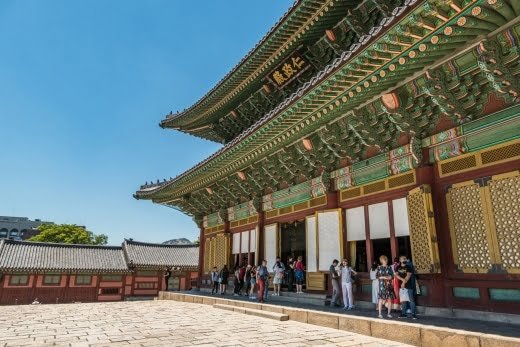
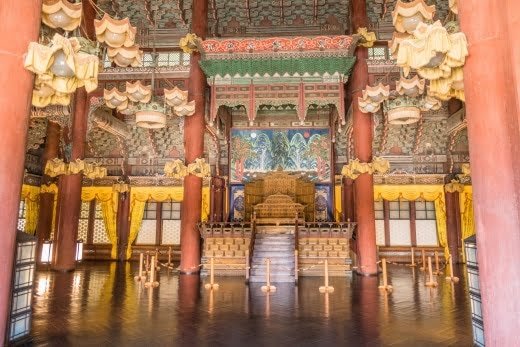
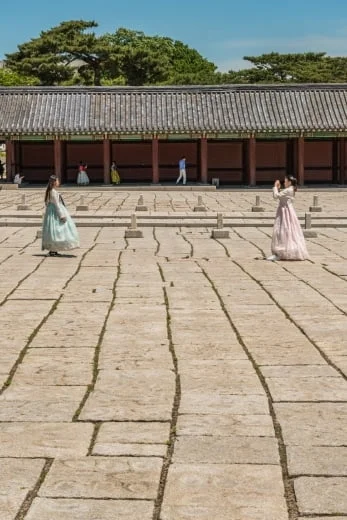
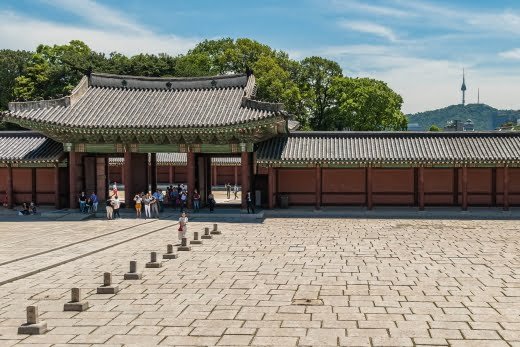
7. Seonjeongjeon Hall
The building was constructed in early Joseon Dynasty. This room, adjoining the throne room, served as a place for meetings, gatherings and seminars that punctuated daily life. Every day, the king discussed state affairs with his senior officials. Seongjeongjeon was destroyed for the first time during the Japanese invasions (1592-1598) and a second time during the Injo coup d'état in 1623.
The surrounding area of the building serves as storage and offices for secretaries. Attached to the hall, a covered corridor leads to the Seonjeongmun Gate. This corridor attests to the use of Seonjeongjeon during royal funerals.
This is the "official" explanation part, because for me, it's a small annex area that we simply skipped. We sometimes pass by buildings like this one and say to ourselves, "well, it looks like others we've already seen", and we pass by without taking any photos... In this case, we didn't even go through the door leading to it since we were heading directly to the neighboring group of buildings.
If you go and take a look, you will notice a small detail when observing its roof. It is the only existing blue tiled palace roof.

Photo credit Seoul Guide.
8. Huijeongdang Hall
La Huijeongdang Hall was used as a residence for court women and later as a place of work and rest for the king. The hall being larger, it replaced Seonjeongjeon to handle state affairs and discuss political issues.
The original building was unfortunately destroyed by fire, most recently this time in 1917. When it was rebuilt in 1920 by the Japanese government, materials from from the king's residence to Gyeongbokgung Palace were used.
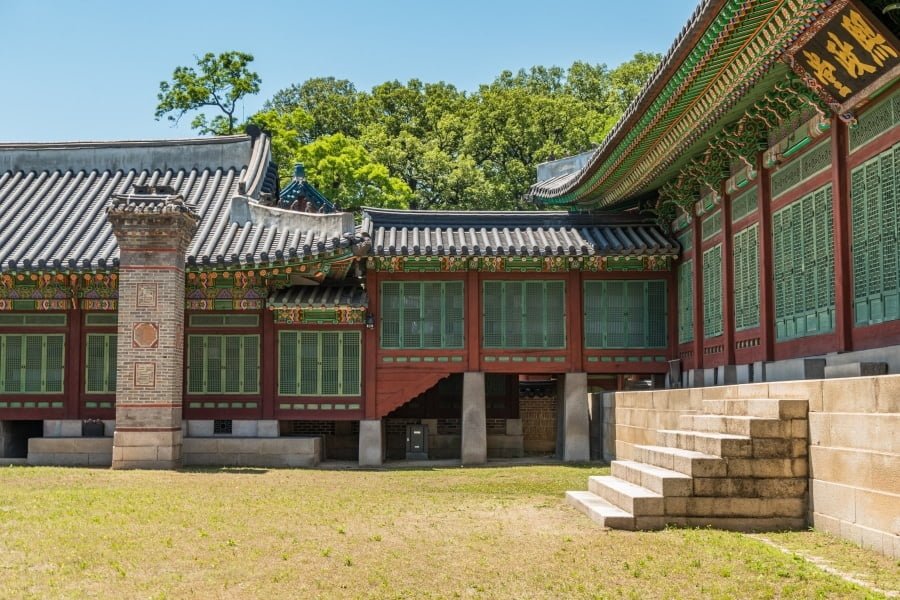
In this case, the rebuilt building is completely different from the original. The exterior of the building looks very much like traditional Korean architecture, but the interior is Western style.
The East and West architecture of the new interior featured many amenities that were uncommon in early 19th century architecture in Korea. These amenities included a waiting room for vehicles in the front, glass windows, wooden floors, electricity, lights, a chandelier, bathrooms, and even curtains.
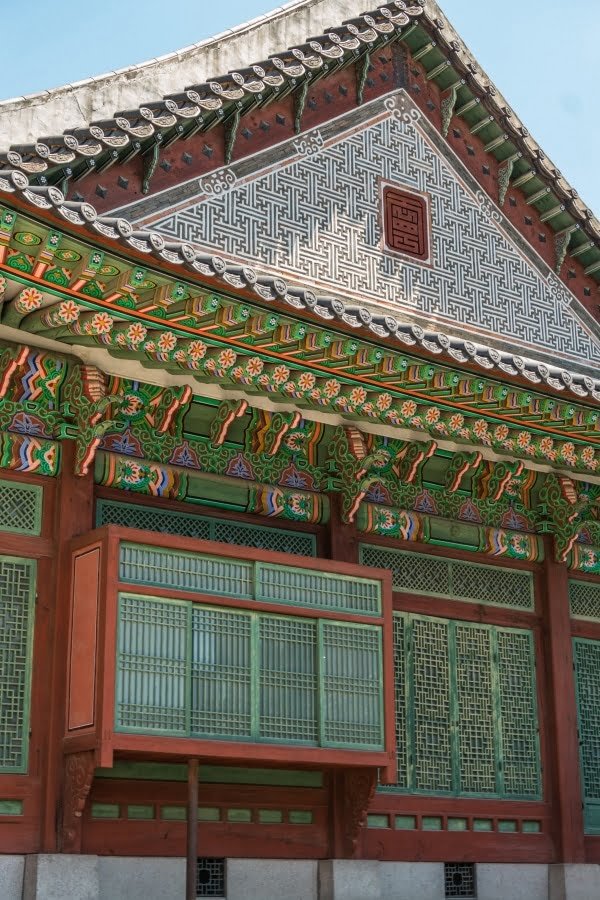
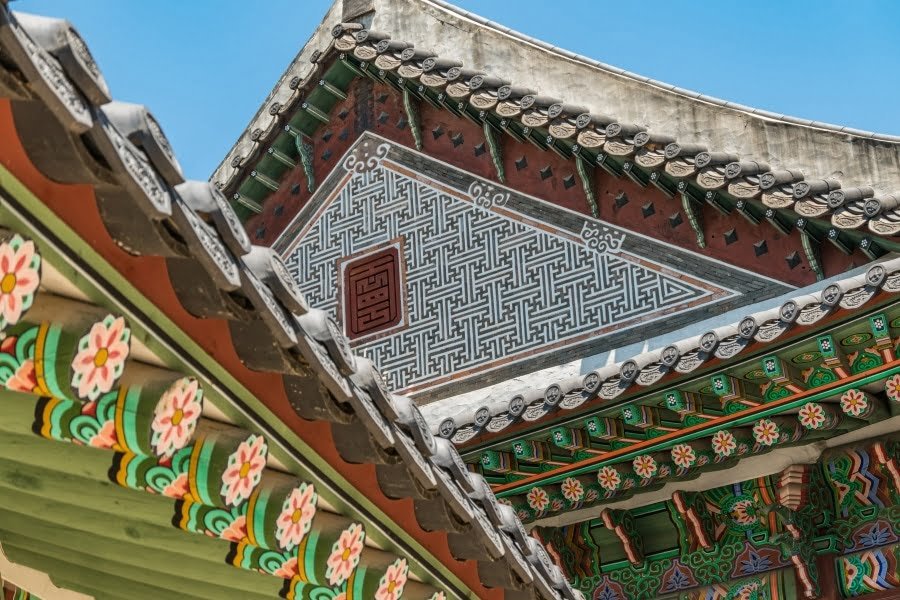
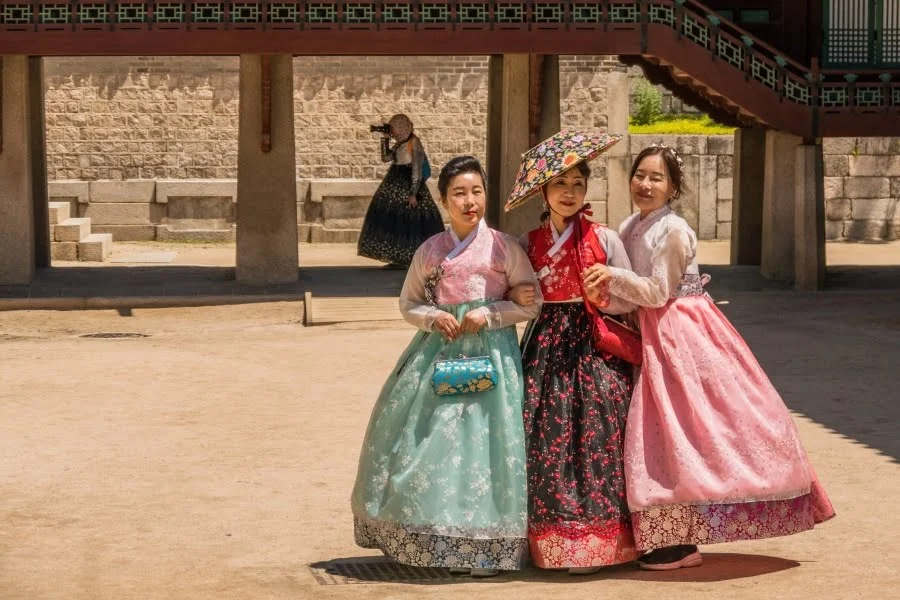
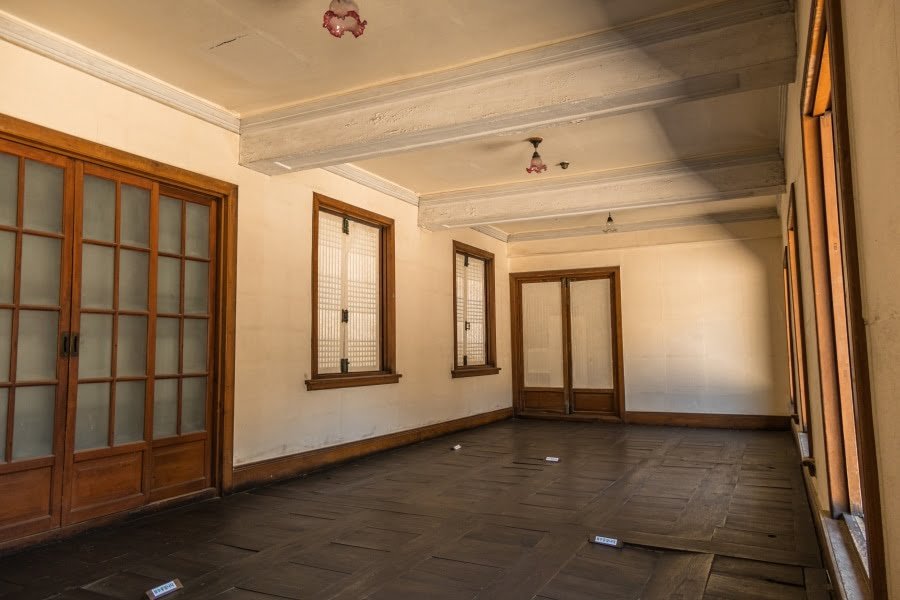
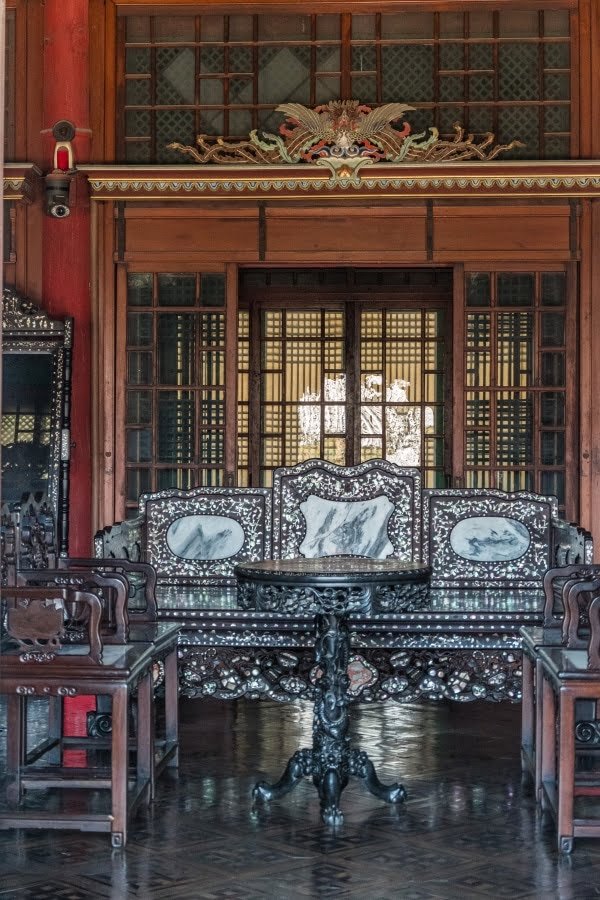
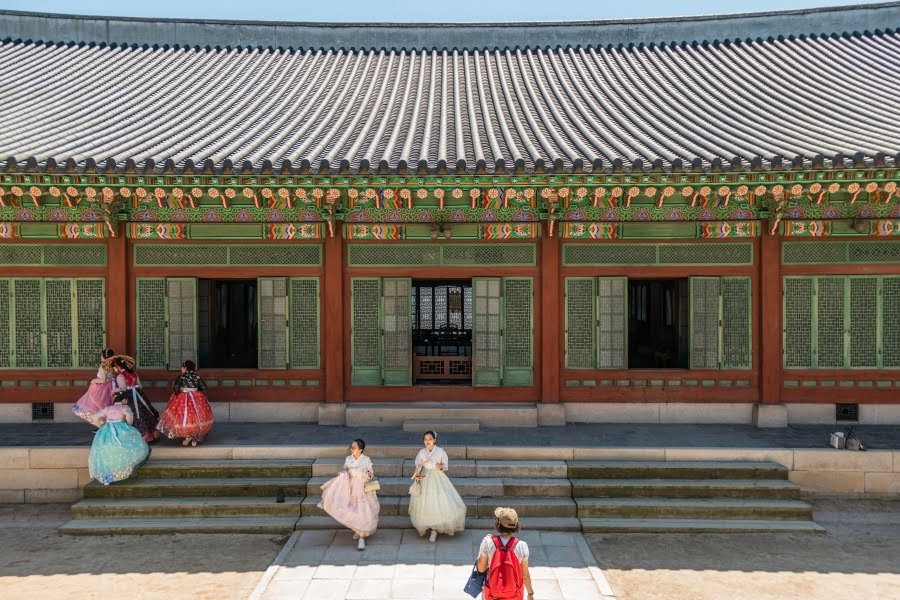
9. Daejojeon Hall
It's about a Queen's residence, which is located right behind the king's residence (Huijeongdang Hall). Usually, every palace building has a ridge on its roof, but Daejojeon does not.
In the center of Daejojeon, there is a small terrace called "Woldae", on which every man who visited a queen would perform a greeting or wait for her to appear. On each side of the Woldae is a stone staircase, decorated with sculptures. On both edges of this terrace, there are large, massive bronze pots.
They have an esoteric origin rather than an aesthetic one, because they are the consequence of a belief that the god of fire was afraid of seeing his own form reflected on the water that was there. Although it is the residence of the queen, it is here that several kings of the dynasty died (Seongjong, Injo, Hyeonjong, Cheoljong or Sunjong to name a few).
On the other hand, I can't find any information about the entire complex of buildings located behind the Daejojeon Main Hall. This was probably part of the queen's quarters. It is a complex of structures connected by raised corridors. Some were probably used for servants and to store personal items, etc.
The back had a terraced garden, with doors at the top leading out to the famous secret garden. I also noticed a striking brick fireplace, covered by carved flagstones at regular intervals. It was a pleasant area to walk through because there was no one there, but it was also aesthetically pleasing, with trees bordering the buildings, providing a welcome bit of greenery.
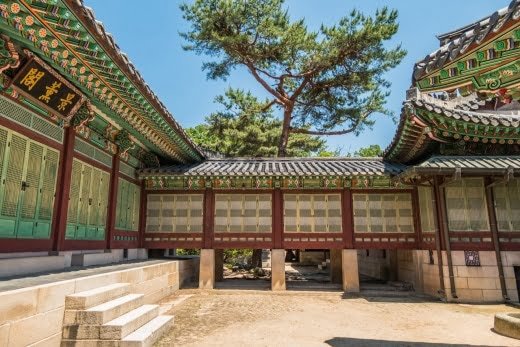
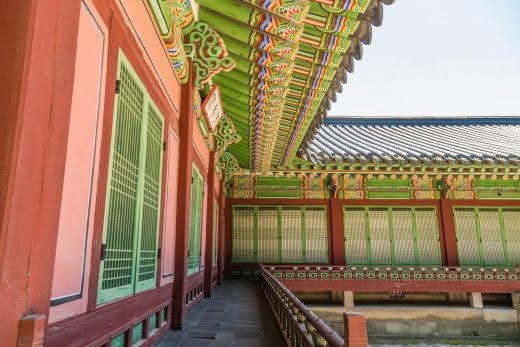

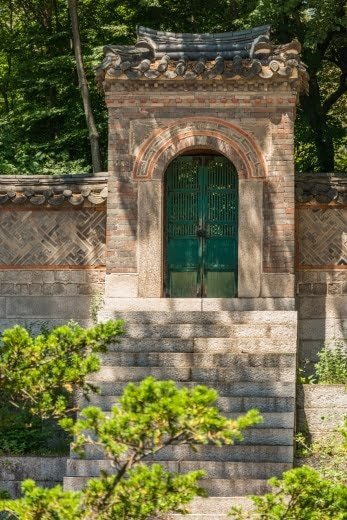
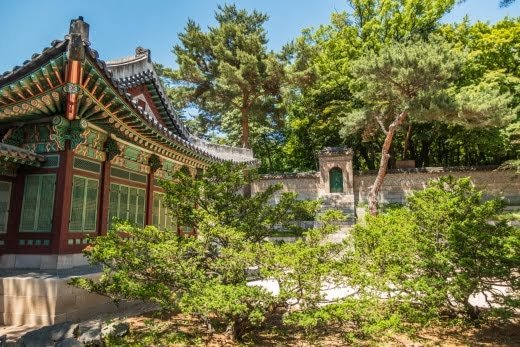
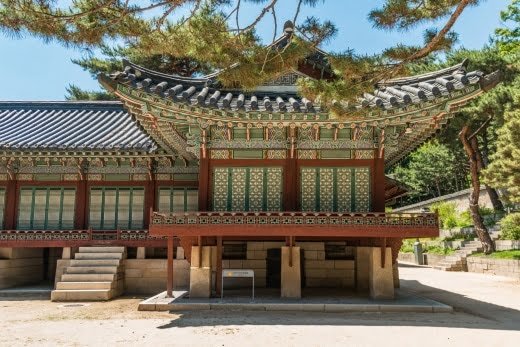
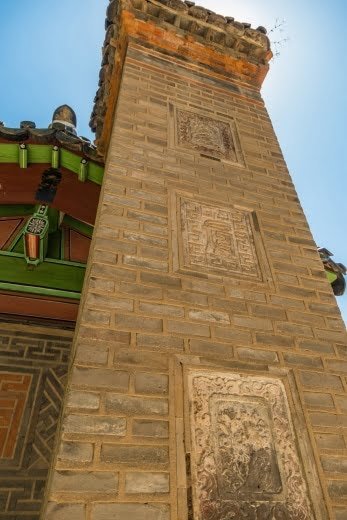
10. Seongjeonggak Hall
Next to the residence of the king and queen, is Seongjeonggak, also called "Yakbang", which can be translated as "pharmacy". Basically, it was a bit like a personal clinic specific to the royal family. This is where the royal doctors of the court took care of the king and his family.
Each doctor had his or her own specialization. Some were in charge of surgery and others of obstetrics. There were also female doctors who only treated women of higher status.
They were on duty day and night in shifts. Here, in the Seongjeonggak (part of a group of buildings called Naeuiwon), all kinds of herbs from all over the country were kept. While today these herbs and instruments used for preparing medicine have all disappeared, there are still a few stone mortars to bear witness to the history of these places.
11. Nakseonjae Complex
This is an area that we skipped. It is a little bit away from all the structures presented so far. However, thinking we had seen everything, we had bought our tickets to visit the secret garden: Huwon.
In doing so, we went while waiting for the time of the visit, to take a look in the neighboring palace, Changgyeonggung Palace, which we flew over largely by going to see the annex buildings and part of the adjacent public garden.
Concretely, Nakseonjae is a residential complex added in 1847 during the reign of King Heonjong. The queen consort, Hyohyeon, having been unable to bear an heir until then, the young King Heonjong took a new concubine under the name of Gyeongbin. The complex therefore served to house the new queen consort, Gyeongbin (the residence being called Seokbokheon) but also the king's grandmother, Queen Suwon; who had her residence, Sugangjae.
The main pavilion, Nakseonjae, served as the king's library where he read and painted. A garden is located at the back of the residence. Nearby is a simple and elegant pavilion known as Sangryangjeong, or Pyeongwonru before the Japanese occupation. This pavilion was used for rest and offered a beautiful view of the palace area below.
The architectural style is devoid of vibrant and colorful royal decorations commonly seen with other royal residences. A simpler style which contrasts with the rest of the palace. No colored roofs therefore but dark wood whose only contrast is provided by the white panels arranged on the facades.
This complex was the home of the descendants of the royal family, the pavilion having been used by the royal family until the end of the 20th century. The complex was first opened to the public in 2006 after many years of restoration.
The Secret Garden (Huwon)
If you want to visit the secret garden of the palace as an extra, this is where you should go, once you have your tickets. Covering an area of 32 hectares Behind Changdeokgung Palace, the magnificent garden occupies about 60% of the total surface area of the palace.
It was a garden for the exclusive use of the royal family and the women of the palace. It contains a lotus pond, pavilions and multiple lawns, trees and flowers. There are more than 26 specimens of over 100 different species. Many of the trees in the garden are now over 300 years old, and could provide evidence of the activities once practiced in these areas.
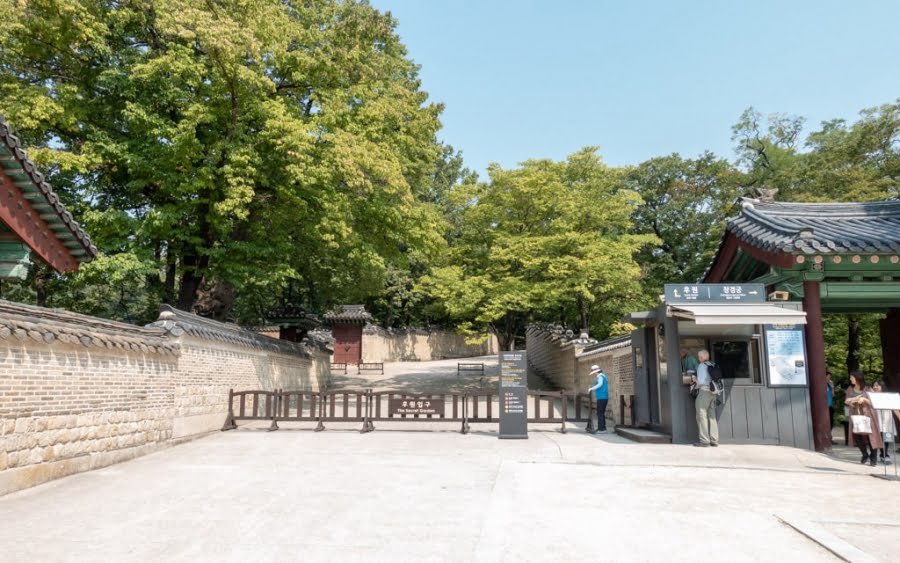
Photo credit Seoul Guide.
Huwon, the official name of the garden, was used by the king to rest there, but also to organize a variety of ceremonies, banquets, parties, archery tournaments or even fireworks. The design of the garden blends harmoniously with the surrounding nature.
The garden is adapted to the topography, geography and ridges of the Bugaksan MountainThe landscaping is minimal and left as much as possible untouched and untouched by human hands. It is an excellent example of Joseon Dynasty gardening design.
One might think that the garden was more spared from fires and other destructions and yet no, during the invasion of 1592, the garden did not escape the fury of the Japanese. It was from the reign of King Injo in 1623, that the restoration of the garden was ordered and continued for more than a century, giving it its appearance today.
Why a “secret” garden, you might ask?
Because it is reserved for the king's private use, people used to call the garden "Geumwon", the "forbidden" garden. Indeed, even high-ranking officials were not allowed to enter the garden without the king's permission. Huwon Garden also has other names such as "Naewon" (inner garden) but nowadays it is mainly “Biwon,” which translates to secret garden, which remains in use. Probably to notify the privileged character of those who had the honor of treading this corner of nature.
Practical information about the secret garden
12. Buyongji Pond and Juhamnu Pavilion
Our first stop on this tour of the garden was a stop at the edge of the pond, called Buyongji. In front of us is the Juhamnu pavilion. Not being a fan of group tours, I admit that I wasn't very diligent in listening to the guide, especially since unless you were really next to him, you couldn't hear him very well (despite a portable speaker system).
As usual, I was more in the desire to capture what surrounded me, to observe around and take pictures. The explanations, I will have them after the fact when writing this article, which allows me to share them with you now. First of all, we find in the order of construction the basin itself, built from 1707.
Then, everything around it is related to studies. First, we find the Juhamnu pavilion, added at the beginning of the reign of King Jeongjo, 22nd king of the Joseon dynasty, in 1776. This building, overlooking the pool, served as a bookstore, gathering thousands of books on the first floor, while the second was used as a reading room. Some of the works were also the work of the king himself, who had a deep interest in science (we can also see a bronze sundial on the side of the pool).
Once you have studied well, it is time to East Pavilion, Yeonghwadang that the final exam was held. It should be noted that Korean society during the Joseon Dynasty was organized and administered by the scholarly nobility, recruited from the small landowner class through an examination system called "Gwageojedo" in Korean. It was originally the place where the king and his subjects enjoyed poetry and flowers, but King Jeongjo decided to turn it into this examination room.
On one side of the pool, you will see a small pavilion in the shape of a cross, with two legs on stone stilts dipping into the water. Called Buyongjeong, it is the last pavilion added in this area, in 1792. It was used to celebrate graduation celebrations. The circle is complete.

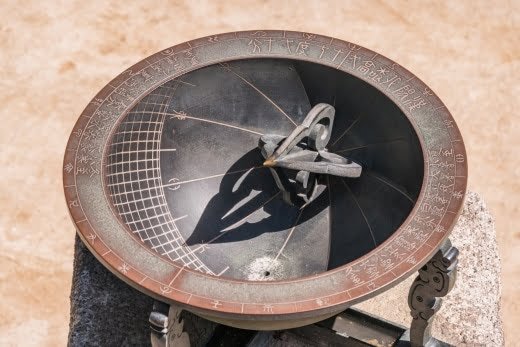
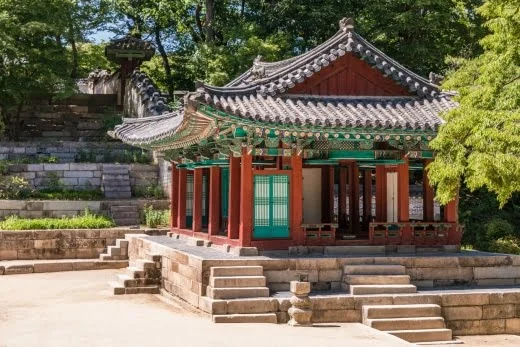
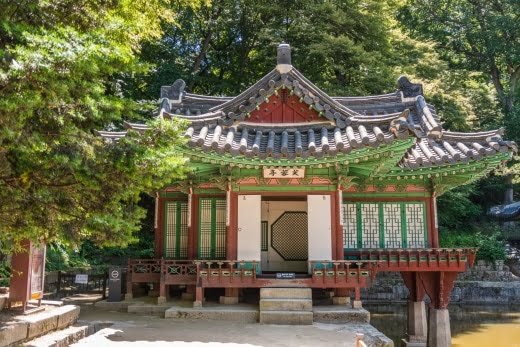
13. Aeryeonji Pond and Aeryeonjeong Pavilion
The next step took us past another, smaller pool. Aeryeonji Pond served mainly as a backdrop for the small pavilion located opposite, AeryeonjeongThe latter is accompanied by a small annex building, the Uiduhap pavilion.
On either side of the pool, you will notice a stone arch with an inscription on the top. Called Bulromun Gate, it is said that anyone who passes below is blessed with long life and good health, so treat yourself!
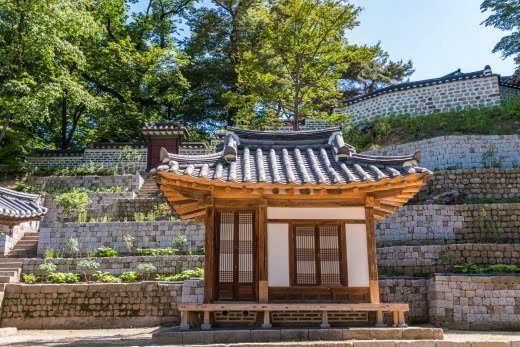
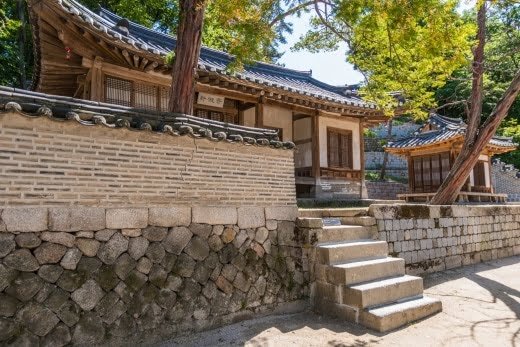
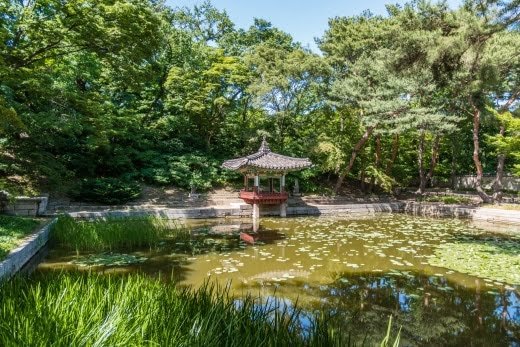
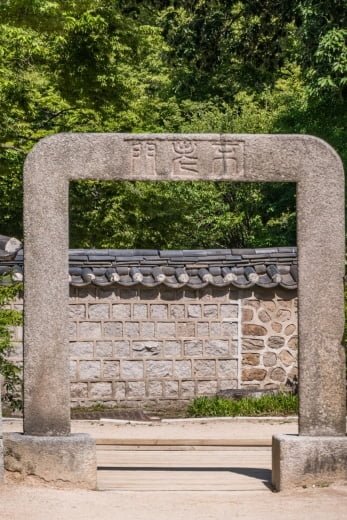
14. Yeongyeongdang and Seonhyangjae Royal Pavilions
While we are no longer really in the group, dragging behind to take our photos, we arrive at the level of the royal pavilions Yeongyeongdang and Seonhyangjae. It is a pleasant area to walk through. We are surrounded by vegetation, and more particularly maples (or similar) which, even at this time of year, produce reddish leaves. This offers a nice range of colors.
All the buildings in this complex were built on the model of the houses of the Korean nobility during the reign of King Sunjo (1800-1834). As this complex is more recent, it is an excellent testimony to the architecture of that period, as it is still well preserved. Yeongyeongdang was the building occupied by the master of the place.
And if those staying at Yeongyeongdang had children of their own, their privilege required the ability to provide the best education for their offspring. Seonhyangjae room so worked here as the royal family's personal library and school, with dedicated, competent teachers.
This building is a bit special. Since Seonhyangjae faces west, the sun would hit the building at sunset. So a structure with blinds was installed towards the outside of the building to prevent strong sunlight from entering the room. In addition, this structure is topped with bronze plates on the roof. In this regard, it was one of the most luxurious buildings of its kind in Korea.
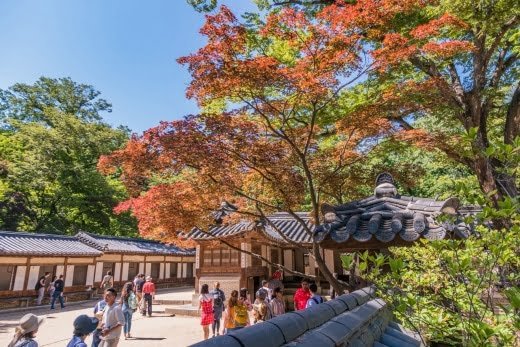
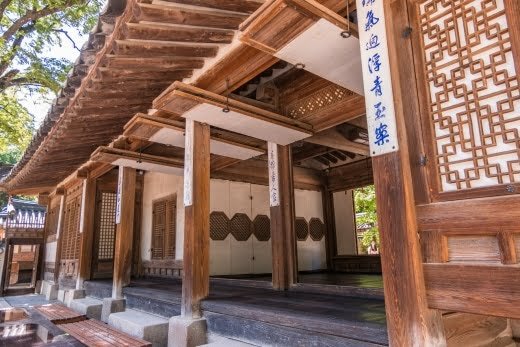
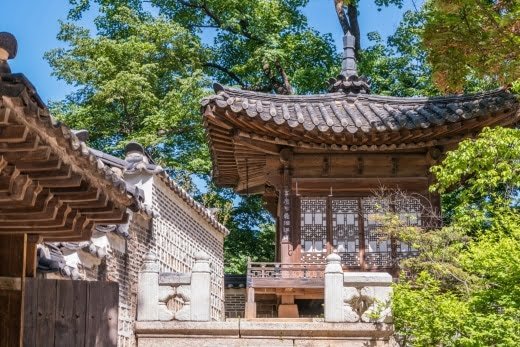
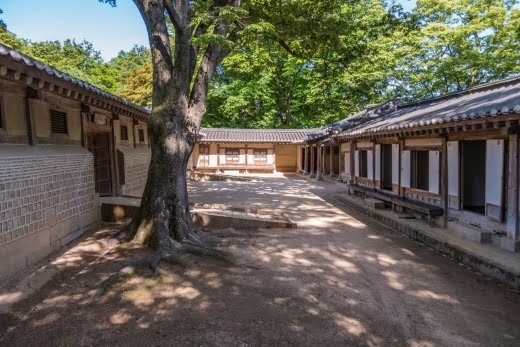

15. Gwallamjeong Pavilion
We then passed another pond. The place is quite photogenic, especially imagining the autumn colours. Gwallamjeong is a small pavilion fan-shaped pavilion that stands on the edge of Bandoji Pond. No one knows exactly when this pavilion was built, but it is generally accepted that it is recent, probably added between the end of the Joseon Dynasty and the beginning of the colonial period.
16. Ongnyucheon Stream
This part of the garden, occupying the part furthest from the Changdeokgung palace, was laid out in 1636. The date on which the waterfall and the stream flowing from it were added. Ongnyucheon Stream and the water from the Eojeong well flow through the garden, in which several pavilions, including the Cheonguijeong, Soyojeong, Taegeukjong, Chwihanjeong, were distributed along. Each pavilion had a simple stone bridge over the stream to allow pedestrians to cross.
At the starting point of the stream, next to the Eojeong Well, you can see a large natural rock called "Soyoam" on which an "L" shaped channel is carved and from which an artificial waterfall flows below.
On this rock, we can read "玉流川", engraved by King Injo himself. If you are not a language expert, note that these are hanja, Chinese characters already used in the Korean language before the introduction of hangeul. To complete this information, it is necessary to understand that although invented in 1443 by Sejong the Great, this writing system was literally banned for centuries by his successor to the throne. And if it persisted among the people, the elites and the royal family banned its use for centuries, until its rehabilitation only in 1894!
This inscription can be translated as " jade stream" Later in 1690 a poem was also engraved on this same rock, which says: " The stream flows beyond measure, and the waterfall falls from the sky. These remind me of the white rainbow, thunder and light everywhere in the valley. »
Where I listened to the guide a little was when he introduced us to the small pavilion, Cheonguijeong and its thatched roof. The latter is erected in the center of a small rice field. We were told that the king wanted to understand the process that most of the population had to go through, living largely from rice cultivation at that time.
18. Changdeokgung Chinese Juniper
We come to the last stage of our visit to Changdeokgung Palace. We finish the guided tour of the secret garden which, if we forget the "herd" aspect, remains very pleasant. Especially for the moderate cost, there is little reason to skip it, apart from a time constraint, if you prefer to concentrate on other visits while your stay in Seoul is limited.
The way back took us past the complex of Yeongyeongdang, while being in the shade. Heading towards the exit, we find ourselves walking along the Ongnyucheon Canal, the very one whose source we have just seen and which is therefore spanned by the oldest bridge in Seoul mentioned above (Geumcheongyo, number 4 on the map).
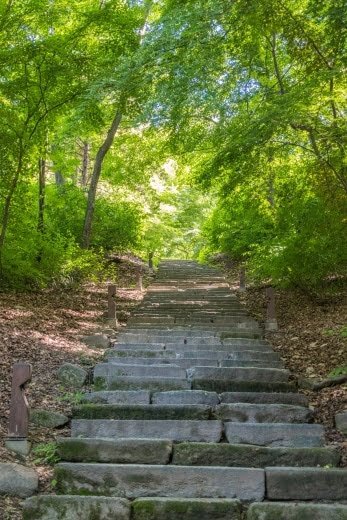
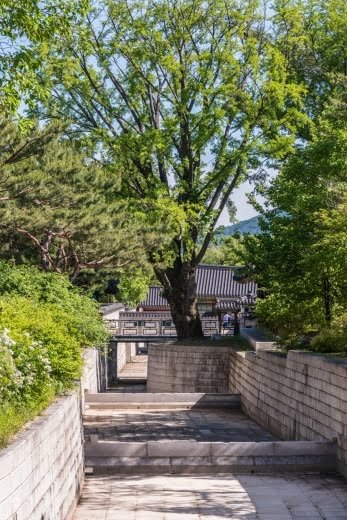
It is when passing by the Gwolnaegaksa complex that we notice an old tree, carried by its crutches. The tree will be located on the left side when you exit the secret garden tour and return to the palace.
Known to Changdeokgung Chinese Juniper (for "Chinese juniper of Changdeokgung"), the tree measures 12 meters high and 5,9 meters in circumference. A very modest size, but a venerable age, estimated at 750 years old. When you see the history of the place, you think it's a shame that this tree is ultimately the oldest thing in the palace, and would have survived the passage of time much better than the palace itself. However, given its appearance, I suspect that it must have already been struck by lightning or at least lost branches following a storm or something.
Chinese juniper trees were commonly used to make incense for rituals performed by worshipers visiting the nearby Seonwonjeon Shrine, due to the aroma they give off.
What to do around Changdeokgung?
- Changgyeonggung Palace
- Bukchon Hanok Village
- Insadong Neighborhoods
- Jongmyo Shrine
Did you like the article? share on Pinterest!



